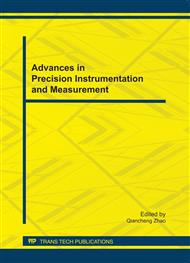p.633
p.641
p.649
p.658
p.667
p.673
p.679
p.683
p.687
A Hybrid Method of Information Embedding for Digital Watermark
Abstract:
Nowadays, the development of information technology is keeping in a fast speed. Large amount of information are exchanged too active to identify the original owner. A serious problem of digital contents copyright violation is happening today and the most effective manner to avoid it is digital watermark technology. In this work, a new approach for digital watermark embedding is presented. This method is different from the traditional ways which are pixel-exchanging and frequency-domain-based watermarking scheme. It combines the pixel-exchanging scheme and frequency-domain-based scheme by exchanges the lower bit plane and imitates the imaging process of a true-lens-imaging system respectively. On the other hand, This method use the point spread function as secret key that keeps the security and spread the embedded information to all bit plane of the image that keeps the robustness. Numerical simulation examples show the effect.
Info:
Periodical:
Pages:
667-672
Citation:
Online since:
September 2011
Authors:
Price:
Сopyright:
© 2012 Trans Tech Publications Ltd. All Rights Reserved
Share:
Citation:


